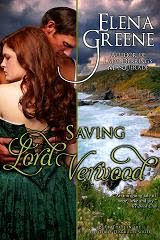If you follow my Diane Gaston Blog, you will know that my father-in-law was hospitalized last week necessitating my quick trip to Williamsburg where the dh’s parents live. It turned out he had pneumonia and a flu virus, but they had feared he had one of those antibiotic resistent “superbugs.” Not the case, thank goodness.
After two days of hospital treatment, my father-in-law came home on antibiotics and was really in pretty good shape, up and around, alert, only a little slowed down physically. His illness made me wonder, though, what it might have been like if he’d lived in Regency times.
In 1918, Dr. William Osler, the father of modern medicine, called pneumonia the “captain of the men of death.” Indeed, it is now thought that a great portion of the 600,000 deaths in influenza pandemic of 1918 were due to bacterial pneumonia which took over after the flu virus compromised the immune system.
In Regency times, pneumonia was called “peripneumony”or inflammation of the lungs. It was treated with bleeding, at least until the patient was able to expectorate. After bleeding blisters were applied. Blistering was the practice of applying plasters to the skin with caustic substances that caused blisters. The blisters would pull the diseased humors from the body and then would be drained. Other treatments included enemas, sweating, and, probably most effective, concoctions that would promote coughing or “expectoration.”
I’m always appalled at how the treatments of illness in these early times seemed to put more strain on the body than would provide relief. (Although we now know bloodletting is an effective treatment for a few very specific conditions) Luckily today we have antibiotics and immunization to combat pneumonia so that it is no longer the “captain of the men of death.”
Have you come across any alarming treatments used during Regency times?
Stop by my website and see my newest bookcover – for Born to Scandal coming out December, 2012. Read a sneak peek.



